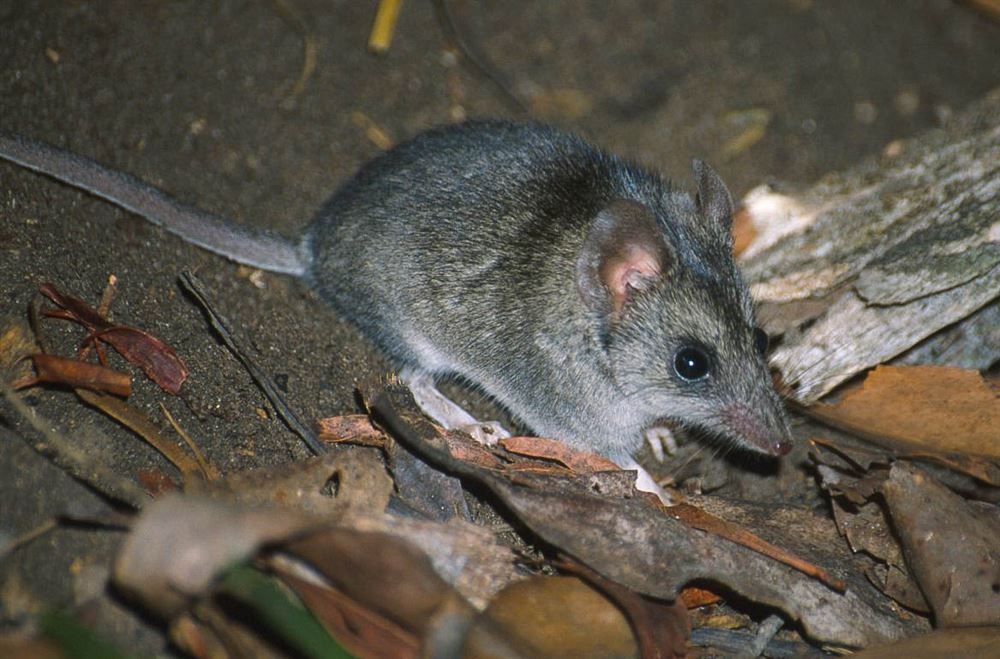
After Australian mega-fires, many species face extinction threats
The endangered Kangaroo Island dunnart is one of three species that lost more than 80% of its habitat to the Australian mega-fires in 2019. (Government of South Australia photo.)
Habitat loss threatens more than 800 vertebrate animal species.
For many, the catastrophic 2019–20 Australian mega-fires feel like a distant nightmare. The fires burned for seven months, destroying vegetation across an area larger than Portugal and killing an estimated three billion animals, according to a report by the World Wide Fund for Nature.
A recent study in Nature Ecology & Evolution found that the fires burned significant portions of habitat of more than 800 animal species, setting aside invertebrates, freshwater fish, and turtles. More than 100 of these species were already listed as being threatened with extinction, and these new findings suggest that 49 more may need to be added to this list.
“We, the people and government, need to either change our ways or be comfortable with our grandchildren never seeing koalas, except in a book or zoo,” said Michelle Ward, a doctoral candidate at the University of Queensland who led the study, in an interview about her findings.
Ward’s study found that 70 species lost more than 30% of their natural habitat to the fires. Three of these lost more than 80%, and one gecko species lost 100% of its habitat to the fires. Of these 70 species, 21 were already classified as threatened with extinction. The remaining 49 will need to be monitored to evaluate whether this decrease in habitat will result in diminished population size. Because of this habitat destruction, the threat of the fires persists long after the flames have died.
Australian ecosystems are no strangers to fire. In fact, many species rely on seasonal fires to complete their life cycles. In a recorded presentation released Oct. 19 at the Council for the Advancement of Science Writing’s New Horizons in Science 2020 conference, Ward noted that the recent mega-fires were “larger, more frequent, and [more] intense” than anything seen before. They will have lasting impacts on these ecosystems, as natural resources, such as food and shelter, will likely require decades or centuries to be replenished.

Logging practices currently employed in Australia played a significant role in setting the stage for these fires, Ward said. It may seem counterintuitive that the removal of fuels from an environment would lead to more burning. However, as large trees are harvested, more sunlight penetrates the rainforest to reach the forest floor, causing wet undergrowth to dry out.
Climate change, driven largely by increased carbon dioxide emitted by human activity, also contributes to the drying of these ecosystems. As the climate warms, rain patterns shift and result in drought.
Mega-fires have not been limited to Australia. In 2019 catastrophic fires burned in the Amazon rainforest, and this year major fire events have taken place throughout the western United States. As of October, this year California wildfires have already burned more than 5.5 times the annual average area burned between 2000 and 2019.
A call for action
Ward believes that in addition to actions to reduce emissions and sequester carbon, action from the Australian government can protect or restore many of the species devastated by the mega-fires.
These actions include monitoring population sizes of at-risk animals and protecting the habitat areas that remain intact after fires. Removing invasive predators such as cats, dogs, and foxes, and prohibiting logging in these areas, would help, too. Ward also called for efforts to restore burned ecosystems, particularly wet forests and rainforests. That restoration would serve to both store carbon, in the form of plant materials, and help retain moisture which would help prevent future burns.
This catastrophe mobilized Australian citizens, often as volunteers, to help those—humans and animals alike—affected by the fires. “These challenges ahead are daunting,” Ward said in an interview. But they are also opportunities to “improve human safety, address climate change mitigation, and ensure species conservation.”